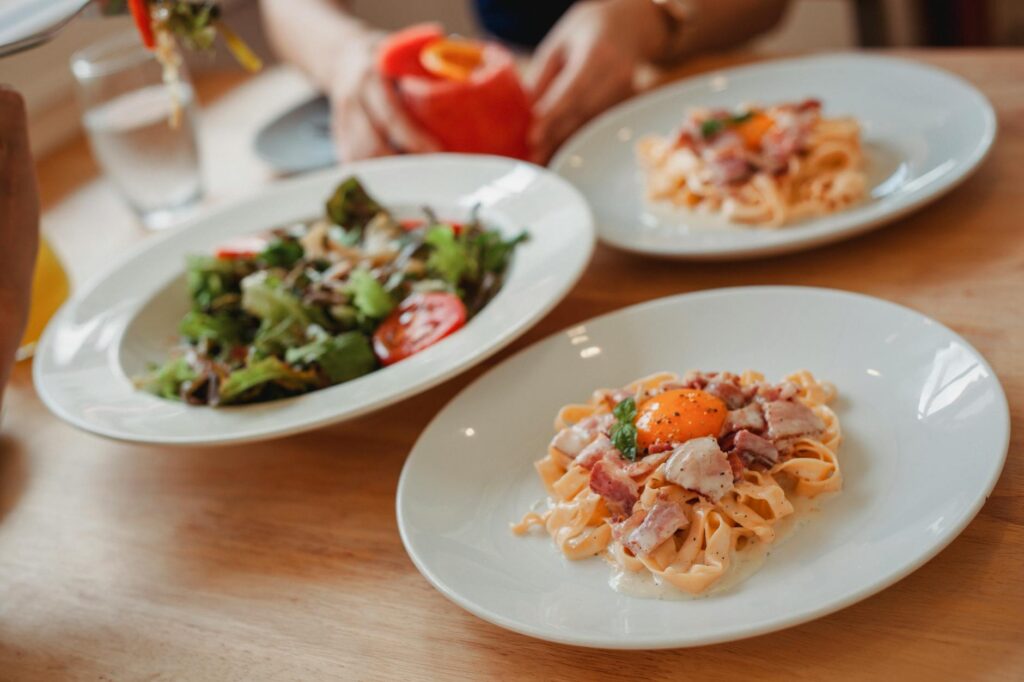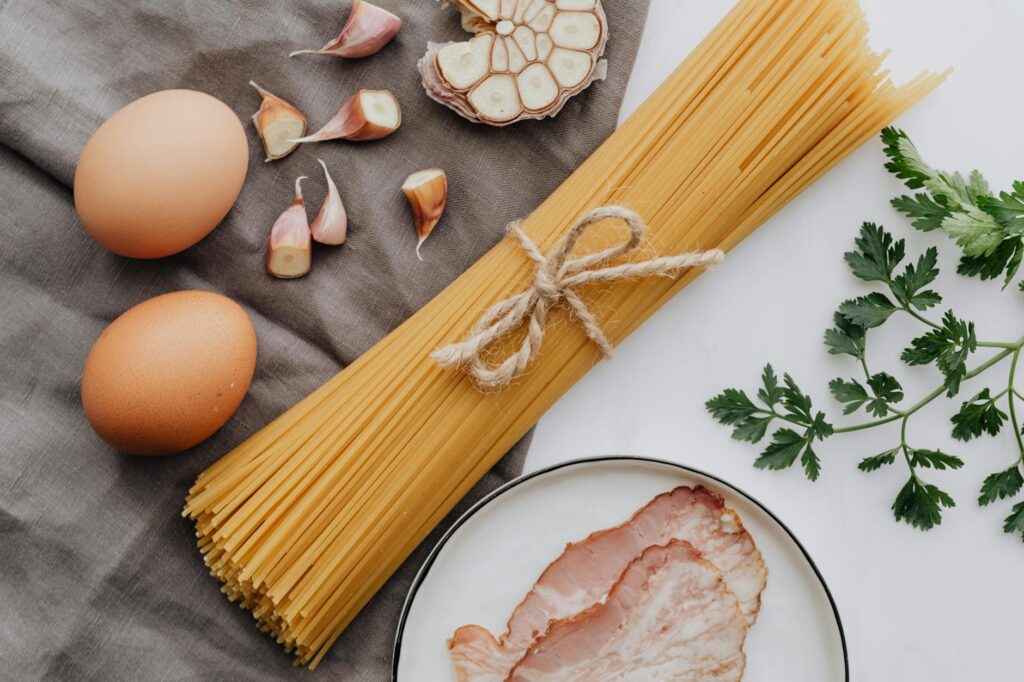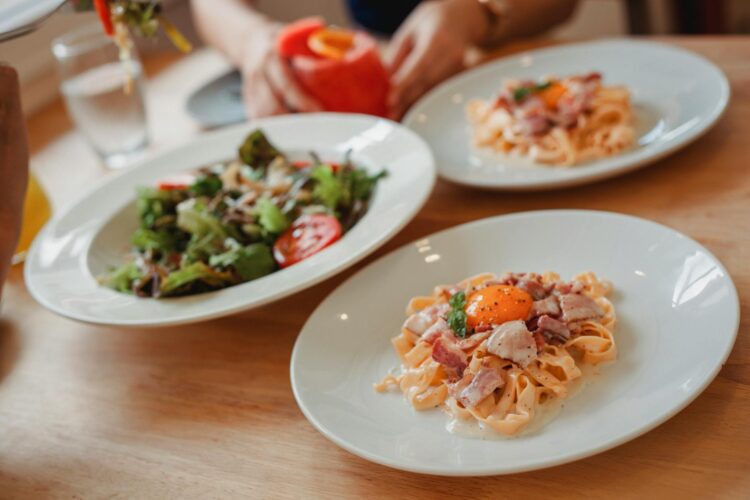Spaghetti Carbonara: a dish shrouded in myths and often misrepresented outside of Italy. Let’s unravel the secrets of this Roman classic and discover how to make it authentically.
The Origin Story
Contrary to popular belief, cream is a complete no-no in authentic Carbonara. Its origins are firmly rooted in the post-World War II era of Rome, born from readily available ingredients like guanciale (cured pork jowl), eggs, Pecorino Romano cheese, and black pepper. Some claim its origins are even older, possibly linked to miners’ hearty meals. Learn more about the history of Carbonara.
The Holy Trinity of Ingredients
The foundation of a perfect Carbonara lies in the quality of its three core ingredients: guanciale, Pecorino Romano, and eggs. Substituting pancetta or bacon is a common mistake. Guanciale provides a unique, melt-in-your-mouth texture and flavor unmatched by other cured meats.  The sharp, salty bite of Pecorino Romano contrasts beautifully with the richness of the guanciale, and high-quality free-range eggs are essential for a creamy, emulsified sauce. Find the best Pecorino Romano here.
The sharp, salty bite of Pecorino Romano contrasts beautifully with the richness of the guanciale, and high-quality free-range eggs are essential for a creamy, emulsified sauce. Find the best Pecorino Romano here.
Cooking the Guanciale
The guanciale should be rendered slowly over low heat until it releases its fat and becomes crispy. This process infuses the fat with flavor, which is crucial for the sauce’s richness. Discarding the rendered fat would be a culinary crime!  Reserve some crispy bits for added texture and garnish. Check out our guide to preparing perfect guanciale.
Reserve some crispy bits for added texture and garnish. Check out our guide to preparing perfect guanciale.
Emulsifying the Sauce: The Key to Success
This is where many home cooks go wrong. The creamy texture of Carbonara isn’t achieved with cream, but through the emulsification of egg yolks, Pecorino Romano cheese, and the rendered guanciale fat. The heat from the pasta cooks the eggs gently, creating a luscious coating for the spaghetti. Be careful not to overcook the eggs, or you’ll end up with scrambled eggs in your pasta. [IMAGE_3_HERE]
Pasta Selection and Cooking
Use spaghetti, and only spaghetti. Other pasta shapes simply won’t work as well. Cook the pasta al dente—slightly firm to the bite—and reserve some of the starchy pasta water before draining. This starchy water is essential for helping emulsify the sauce.
Combining and Serving
Add the cooked pasta directly to the pan with the rendered guanciale and its fat. Quickly toss it with the emulsified egg mixture, adding a little pasta water at a time to create a smooth sauce. Finish with freshly grated Pecorino Romano and a generous amount of freshly ground black pepper. [IMAGE_4_HERE] Serve immediately and enjoy the symphony of flavors.
Variations and Tips
While purists insist on sticking to the traditional recipe, you can experiment with adding a touch of black pepper to the egg mixture for extra warmth. Some add a little pasta water to help emulsify the sauce. Explore more pasta recipes here.
Beyond the Plate: A Culinary Journey
Making authentic Spaghetti Carbonara is more than just cooking; it’s a journey into Roman culinary heritage. It’s about respecting tradition while appreciating the simplicity and bold flavors of this iconic dish. Mastering Carbonara unlocks a world of Italian culinary exploration. Learn more about Roman cuisine. Discover other classic Italian pasta dishes.
Buon appetito!
